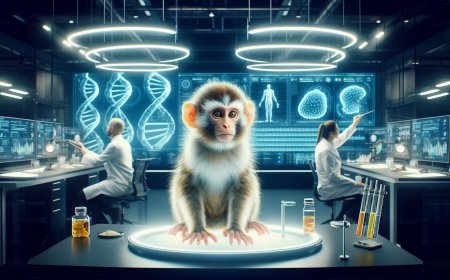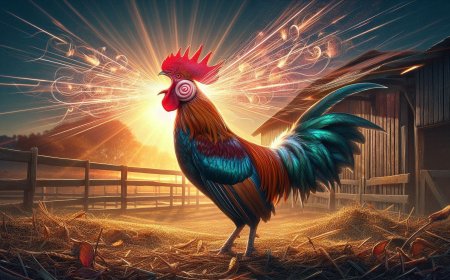The Mighty Hercules Beetle: Nature’s Compact Powerhouse
Discover the incredible strength of the Hercules beetle, an insect capable of lifting up to 850 times its body weight. Learn about its anatomy, habitat, behavior, and its role in science and nature.

In the dense rainforests of Central and South America, a seemingly modest insect walks among the foliage, unaware that it holds a title few creatures on Earth can rival. The Dynastes hercules, more famously known as the Hercules beetle, is not just a fascinating specimen of entomology—it’s a biological marvel. With the ability to lift up to 850 times its own body weight, this beetle ranks among the strongest animals on the planet relative to size. To put that into perspective, if a human had the same strength-to-weight ratio, they could lift a fully-loaded Boeing 747 or haul 50 adult elephants. It's the stuff of superhero legend—except it's real.
Origins of a Titan
The Hercules beetle is part of the rhinoceros beetle subfamily (Dynastinae), known for the impressive horns sported by males. These horns, which can reach nearly half the length of the beetle's body, are not just for show. Males use them to fight for territory or mates, flipping rivals off logs in dramatic beetle brawls that resemble sumo wrestling matches.
Hercules beetles are native to the rainforests of Central and South America, especially in countries like Colombia, Venezuela, and Ecuador. Adults typically grow to 1.5 to 7 inches in length, making them one of the longest beetles in the world. Their glossy exoskeletons can range from olive green to black, often with attractive patterns of black speckles. Interestingly, their colors can change depending on humidity levels—turning darker in moist environments and lighter in dry ones, a phenomenon known as hygrochromism.
The Strength Within
So, what makes this beetle so incredibly strong?
The secret lies in its anatomy and evolutionary design. The Hercules beetle’s strength is derived from its exoskeleton and muscle distribution. Its muscles are arranged in a way that maximizes leverage and torque, making it an extremely efficient lifter. Unlike mammals, insects have a hydraulic-based movement system in addition to their muscular effort, which allows them to generate considerable force with minimal internal resources.
Additionally, being cold-blooded means they don’t use energy to regulate body temperature, allowing more resources to be directed toward muscle efficiency. Their compact size also gives them a mechanical advantage—smaller animals can exert more force per unit of muscle because their bodies are not bogged down by the same physical constraints as larger ones.
Nature’s Tiny Bulldozers
Why would a beetle need such strength? It turns out, the Hercules beetle’s strength isn’t just for show or combat—it serves real-world purposes. In the wild, they use their muscles to:
- Burrow into leaf litter or decaying wood to hide or lay eggs.
- Lift and move debris while foraging for food.
- Climb and maneuver on uneven, slippery surfaces in the rainforest.
- Compete with rivals by flipping them or dragging them away.
These behaviors require significant power and endurance, which the beetle possesses in abundance.
From Forests to Futuristic Design
The Hercules beetle’s incredible strength and unique structural efficiency have made it a subject of intense interest in biomimicry and robotics. Engineers and scientists study its muscle structure, horn design, and lifting mechanics to inspire new materials and miniature robotic devices that mimic its movements and load-bearing abilities.
Imagine tiny rescue robots modeled after the Hercules beetle, capable of navigating through debris and lifting heavy objects relative to their size—this isn't just science fiction. The future of engineering may well be inspired by the world’s strongest insect.
A Giant with a Gentle Demeanor
Despite their fearsome appearance, Hercules beetles are harmless to humans. They don’t bite or sting, and their powerful horns are reserved solely for intra-species combat. They are nocturnal, preferring to move about in the dark, and feed on decaying fruit and sap, contributing to the ecosystem by helping decompose organic matter.
Conservation and Curiosity
While not currently endangered, Hercules beetles face threats from deforestation and habitat loss. Their unique biology makes them popular among exotic pet collectors and insect enthusiasts, which has spurred a demand for captive breeding to help reduce wild capture.
For nature lovers and entomologists alike, the Hercules beetle is a striking reminder of how even the smallest creatures can possess unimaginable strength. It proves that power isn’t always about size—it’s about efficiency, adaptation, and evolution.
Final Thoughts
The Hercules beetle might not wear a cape or fly through the sky, but it holds a place among nature’s elite. It’s a living testament to the brilliance of evolutionary engineering—a beetle that could carry the weight of the world on its tiny shoulders, and do so with style.
In a world where we often look up to giants for inspiration, the Hercules beetle teaches us to look down—and marvel.
What's Your Reaction?






































































































